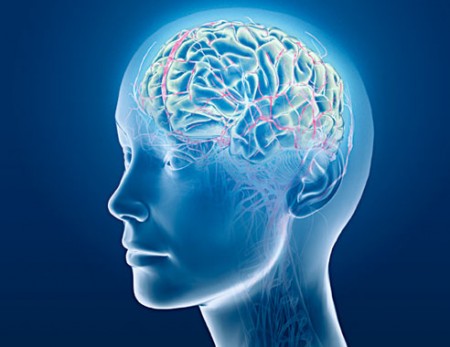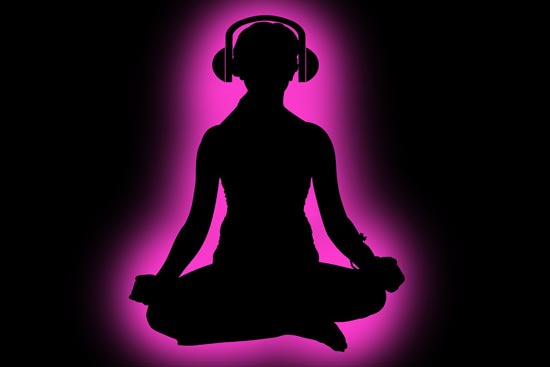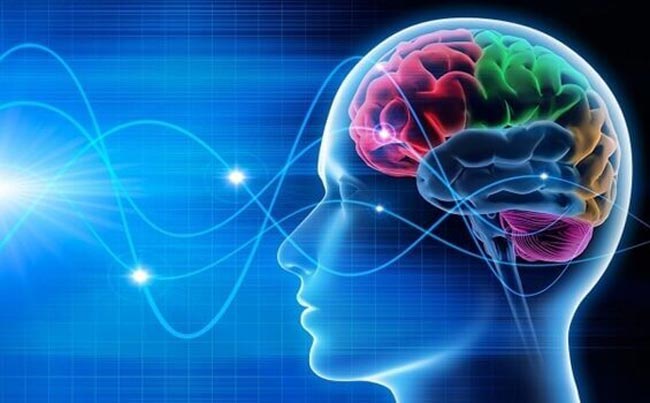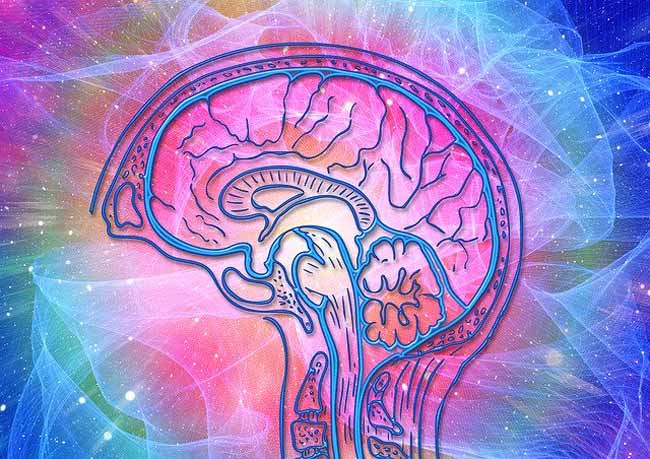Theta waves are slow waves, generally running somewhere between 4 and 8 hertz.
Theta waves are commonly associated with deep relaxation, meditation, intuition and higher consciousness.
Consider the way you feel when you sit on your sofa and enter that calm, relaxed, almost trance-like drowsy state. You aren't ready to fall asleep but you're in a day dream mode.
In this state, your brain is most likely awash with theta waves.
This state is not dissimilar to that of meditation.
Below the theta state is the delta state. Delta waves are observed in abundance in deep sleep.
Above theta is alpha, which tends to be a calm but focused and potentially productive state of mind.

Scientific corroborates the activity of theta waves in a state between sleep and wakefulness:
Cantero et al. (2003) found that… hippocampal (theta) oscillations were associated with REM sleep and the transition from sleep to waking, and came in brief bursts, usually less than a second long. Cortical theta oscillations were observed during the transition from sleep and during quiet wakefulness;
Studies have shown an association of hypnosis with stronger theta-frequency activity (Jensen et al., 2015). (Source: Wikipedia)
So theta is a more introspective state, a state in which you can access the valleys of your mind and explore your thoughts.
How You Can Generate More Theta Waves
Theta brain waves are produced by the brain, but how can we produce more of them?
How can we go from being hyperactive, stressed or anxious to chilled and meditative or introspective and all creative-like!
Brainwave entrainment is one way: The concept of metaphorically feeding the brain theta wave frequencies and encouraging it to follow along and produce more.
I won't get into exactly how this is done here but see this post if you want more on this subject.
But but basically, by either listening to some special music that includes theta waves, or by attaching electrodes to your head (I recommend the former unless you're part of a scientific study) you can access the theta state.
While the Theta spectrum runs from 4-8 Hertz, not all frequencies within this range will have the exact same effect. For example, 5-6 Hertz is a good meditative range, and 7-8hz is good for writer's block and generating creative vision.
Anyhow, let's look at some studies and see how theta wave entrainment can help us.
Theta Waves & Relaxation
Where alpha wave entrainment takes us into the “flow state” of effortless doing, theta wave entrainment puts the brain in a more relaxed state.
This is particularly useful for those who struggle with stress and anxiety and to relax in high pressure situations, and for people who find conventional meditation challenging.
One particular study reported that participants entered a comparatively meditative state after 10 minutes of listening to a 6 Hz theta binaural beat.
Theta activity was induced by a 6-Hz binaural beat. Responses occurred at all cortical regions; however, compared to the control group, the induced responses at the frontal and parietal-central regions were left hemisphere dominant.
Moreover, the pattern of theta activity was similar to that of a meditative state, in which general theta rhythms were increased at the frontal and parietal-central regions and frontal midline theta activity appeared at the Fz position within 10 min stimulus exposure. Therefore, we suggest that a 6-Hz binaural beat on a 250 Hz carrier tone could be used as a stimulus for inducing a meditative state within a short duration.
Don't worry if some of those terms went over your head!
Interestingly, the study was with just 10 minutes entrainment, and even suggests that the an even shorter duration would have the same effect.
I recommend at least 15-30-minute sessions. If you want some great theta binaural beats for relaxation, check out these babies:
Theta Waves & Meditation

Theta binaural beats can help you meditate
Studies show that meditation and theta waves have a special relationship, and that there are many benefits to the “theta state of mind”.
A joint study between Professor Jim Lagopoulos of Sydney University and and researchers from the Norwegian University of Science and Technology (NTNU) investigated changes in electrical brain activity during non-directive meditation.
Experienced practitioners of Acem Meditation, a nondirective method developed in Norway, were asked to rest, eyes closed, for 20 minutes, and to meditate for another 20 minutes, in random order. The researchers then measured their brain activity.
During meditation, theta waves were most abundant in the frontal and middle parts of the brain.
These types of waves likely originate from a relaxed attention that monitors our inner experiences. Here lies a significant difference between meditation and relaxing without any specific technique, emphasizes Lagopoulos.
Previous studies have shown that theta waves indicate deep relaxation and occur more frequently in highly experienced meditation practitioners. The source is probably frontal parts of the brain, which are associated with monitoring of other mental processes.
In short, meditation helps produce theta waves, which play a big role in delivering the many benefits of meditation.
These benefits include lowering feelings of stress and anxiety, inducing a calmer, more positive outlook on life, heightened creativity and critical thinking skills – not to mention the benefits on physical health.
Many studies on mindfulness meditation, assessed in a review by Cahn and Polich in 2006, have linked lower frequency alpha waves, as well as theta waves, to meditation.
So you can clearly see the link here between meditation and brainwave entrainment. The latter, for most, is a faster, more practical way of achieving the former, with theta waves the by-product and wholly-consuming benefit.
If you want some great theta binaural beats for meditation, check out these titles:
Theta Waves & Creativity

Listening to music with theta waves increases creativity and intuitive thinking
Theta music has become quite popular with writers, musicians and artists in general.
This isn't surprising because, as we have explored above, theta waves bring about a relaxed, meditative state. In this state we are able to loosen up, relieve ourselves of stress and worries, turn the mind inwards and access deeper insight.
For want of a better analogy, a dose of theta waves — certainly at the lower end of the frequency spectrum — could be likened to smoking some weed.
There have been a number of EEG-nuerofeedback studies that show correlation between theta (and indeed alpha) waves and performance and creativity enhancement.
Professionally significant enhancement of music and dance performance and mood has followed training with an EEG-neurofeedback protocol which increases the ratio of theta to alpha waves using auditory feedback with eyes closed.
In optimal performance studies we confirmed associations with creativity in musical performance, but effects also included technique and communication…… It is posited that this mediation in part underpins the integrational attributes of alpha-theta training in optimal performance and psychotherapy, creative associations in hypnogogia, and enhancement of technical, communication and artistic domains of performance in the arts.
You can read the full excerpt here.
A follow up review of existing evidence states:
There is evidence of reliable benefits from A/T training with advanced musicians especially for creative performance, and reliable benefits from both A/T and SMR training for novice music performance in adults and in a school study with children with impact on creativity, communication/presentation and technique.
Read more here.
If you want to enhance your creative senses with Theta music, check out Creativity Boost.
Theta Wave Entrainment & Pain Relief
Theta waves can also have a positive effect on pain, though in my experience delta is generally associated with pain relief – due to its influence on the release of natural opiates.
This study assessed the effects that an external, audio, neural stimulus of theta binaural beats (TBB) had on returning the brain neuro-signature for chronic pain to homeostasis.
The study reported a 77% larger drop in the mean for the theta binaural beats intervention
The results supported the hypothesis that an external audio protocol of theta binaural beats was effective in reducing perceived pain severity for participants.
It should be noted, however, that both the placebo intervention also reduced the pain score to some degree. This is not uncommon though as it is widely considered that a certain amount of pain is “perceived”.
Indeed, meditation is also capable of relieving pain: This study with 15 healthy volunteers saw 40 percent reduction in pain intensity and a 57 percent reduction in pain unpleasantness. In contrast, pain-relieving drugs typically reduce pain levels by about 25 percent.
Though small, the results of this study are compelling.
Theta Waves, In Summary
Theta is what I often refer to as “multi-access portal”.
Within its range lies huge potential for exploration of the mind. It can lead to general stress relief and reduced feelings of anxiety and pressure, it can create an introspective pathway that leads to insight and inspiration, and it can even lead to levels of higher consciousness such as lucid dreaming.
At the very least, listening to soothing meditation music infused with theta frequencies is relaxing. The majority of people will find the experience pleasurable, I'm sure.
If you are someone who finds sitting still for meditation very challenging, then theta music designed for meditation is a pathway worth trying.
If you're stressed or anxious, you too should give it a go.
If you have writer's block, need to clear your mind or need a little help climbing down from a higher frequency, theta can help.
If you're interested, I wrote another post on top 10 benefits of theta, which you can read here.



Leave a Reply